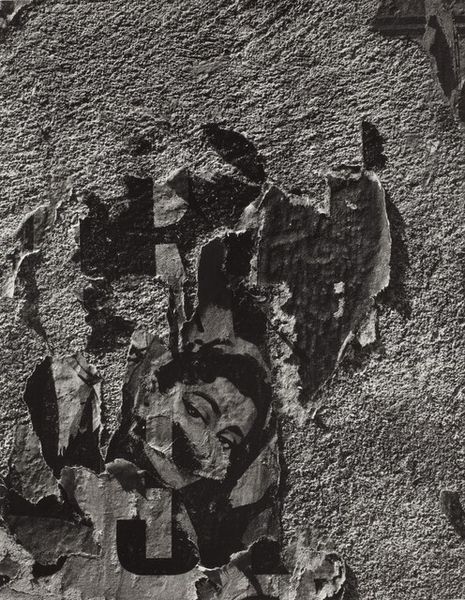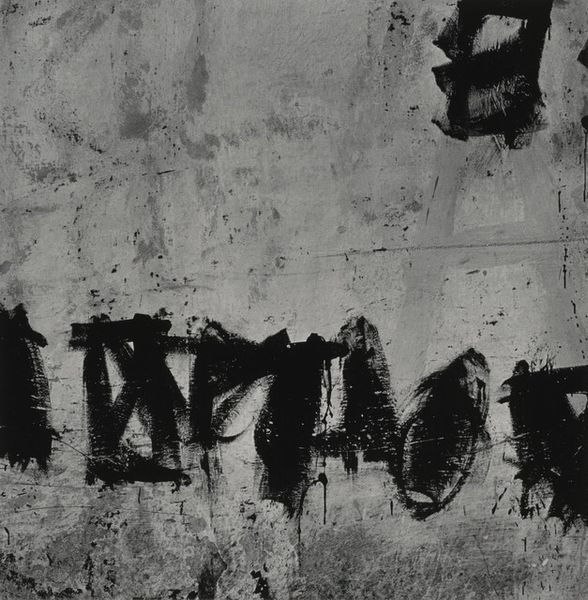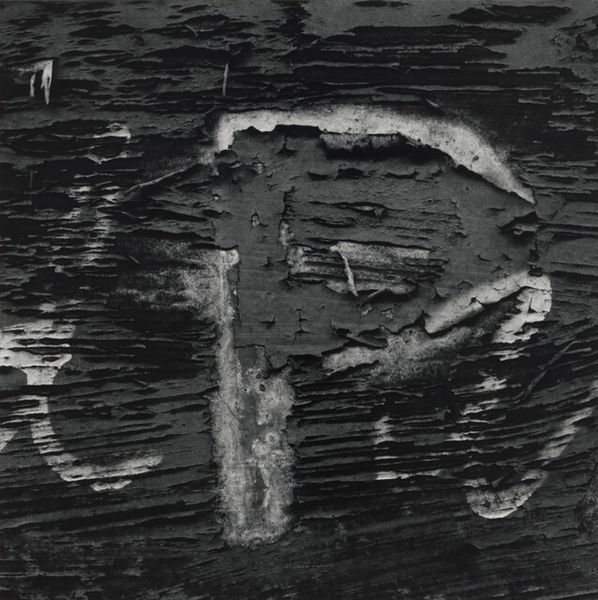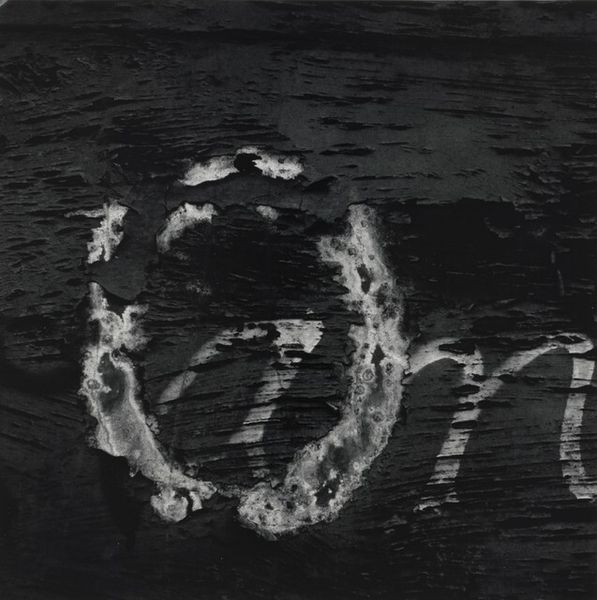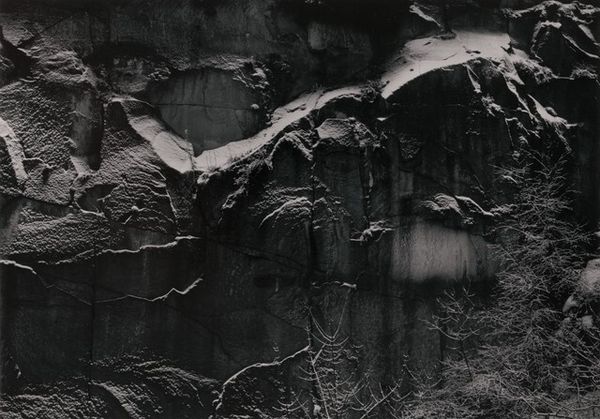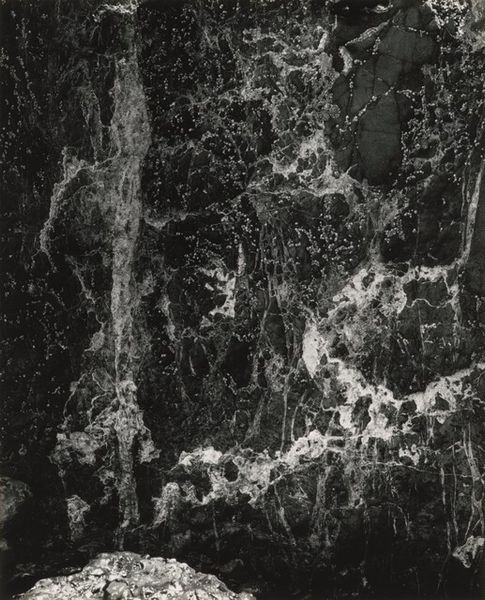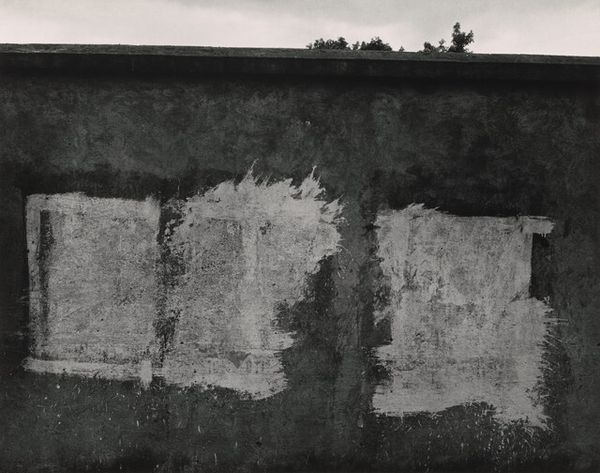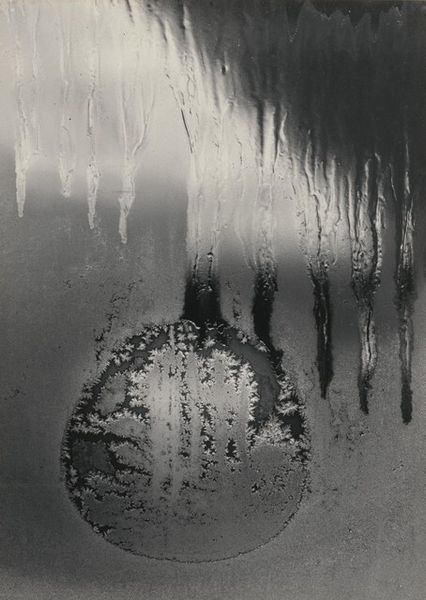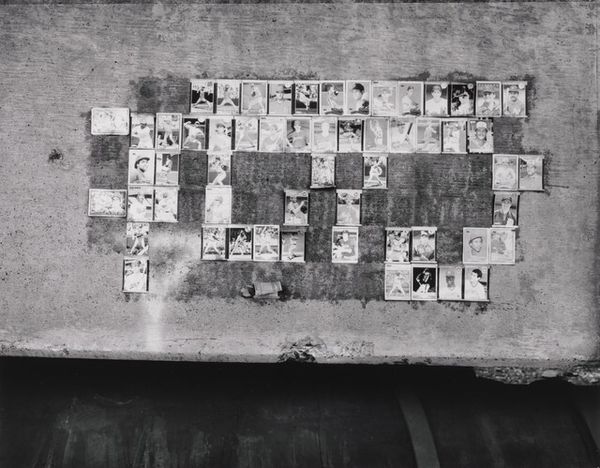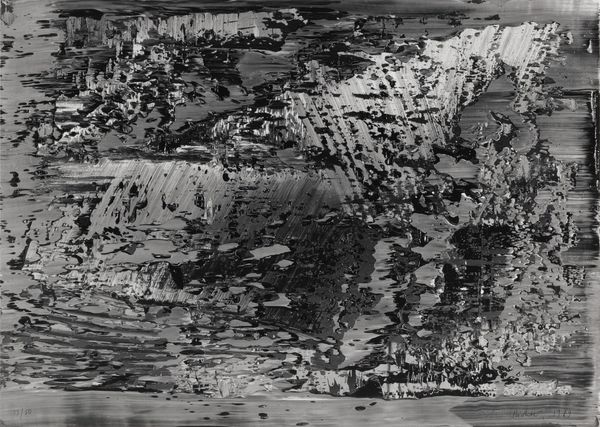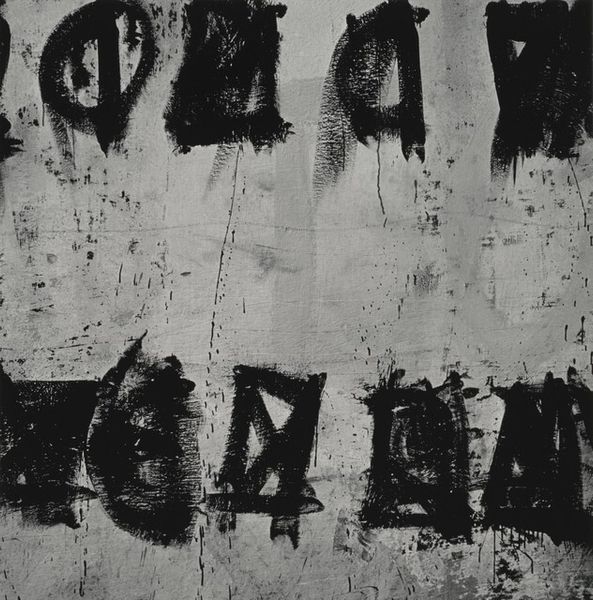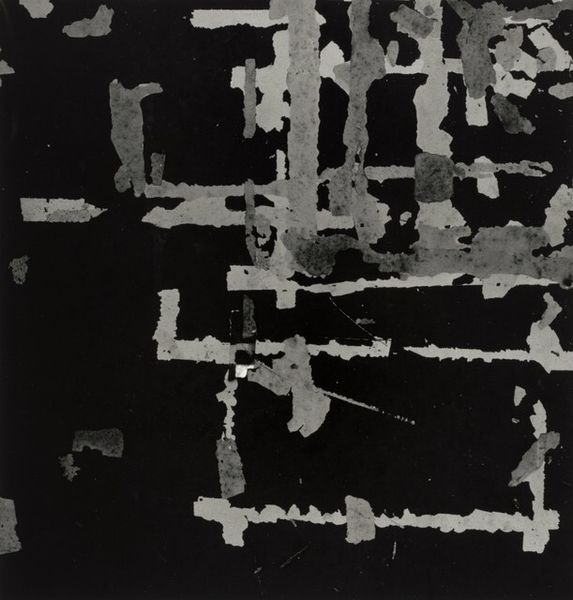
Dimensions: image: 24 × 24 cm (9 7/16 × 9 7/16 in.) sheet: 35.56 × 27.62 cm (14 × 10 7/8 in.)
Copyright: National Gallery of Art: CC0 1.0
Editor: This is Aaron Siskind’s "New York 350," a photograph from 1978. It’s a black and white image, and it seems to show…texture, almost like peeling paint or weathered stone. There’s a stark contrast between the dark background and the brighter shapes in the foreground, kind of angular shapes. What do you see in this piece? Curator: I see a powerful visual echo of urban decay and resilience. Siskind often transformed the mundane into the monumental. Those angular shapes you noticed – they’re like remnants of graffiti, perhaps old signage. But consider them as symbols: broken forms hinting at forgotten messages. Think about what survives in urban environments: layers of history, constantly rewritten. Editor: So the photograph isn’t just capturing something decaying, it's turning it into a… a kind of language? Curator: Exactly! A visual language carved out by time. What do those geometric shapes suggest to you emotionally? Think about the era it was created, 1978 New York, what was the cultural memory and cultural symbolism at that time? Editor: I feel a sense of incompleteness, like I am seeing fragments of words or glyphs...like maybe they're hieroglyphs in an urban cave, it brings to mind grit, poverty, the energy in ruin…a rough time. It also strikes me how textural this image is for being a photograph. Curator: The texture emphasizes the history etched into the surface, but beyond ruin I would also say there is always the human potential for change and the endurance of creativity. That tension between decay and creative act informs how one feels viewing the photograph. Editor: That's so interesting, thinking of this photograph as this idea, as being about both something decaying and the creation of memory. I see so much more to it now. Curator: Yes, this opens up more ways of reading and relating to art.
Comments
No comments
Be the first to comment and join the conversation on the ultimate creative platform.
